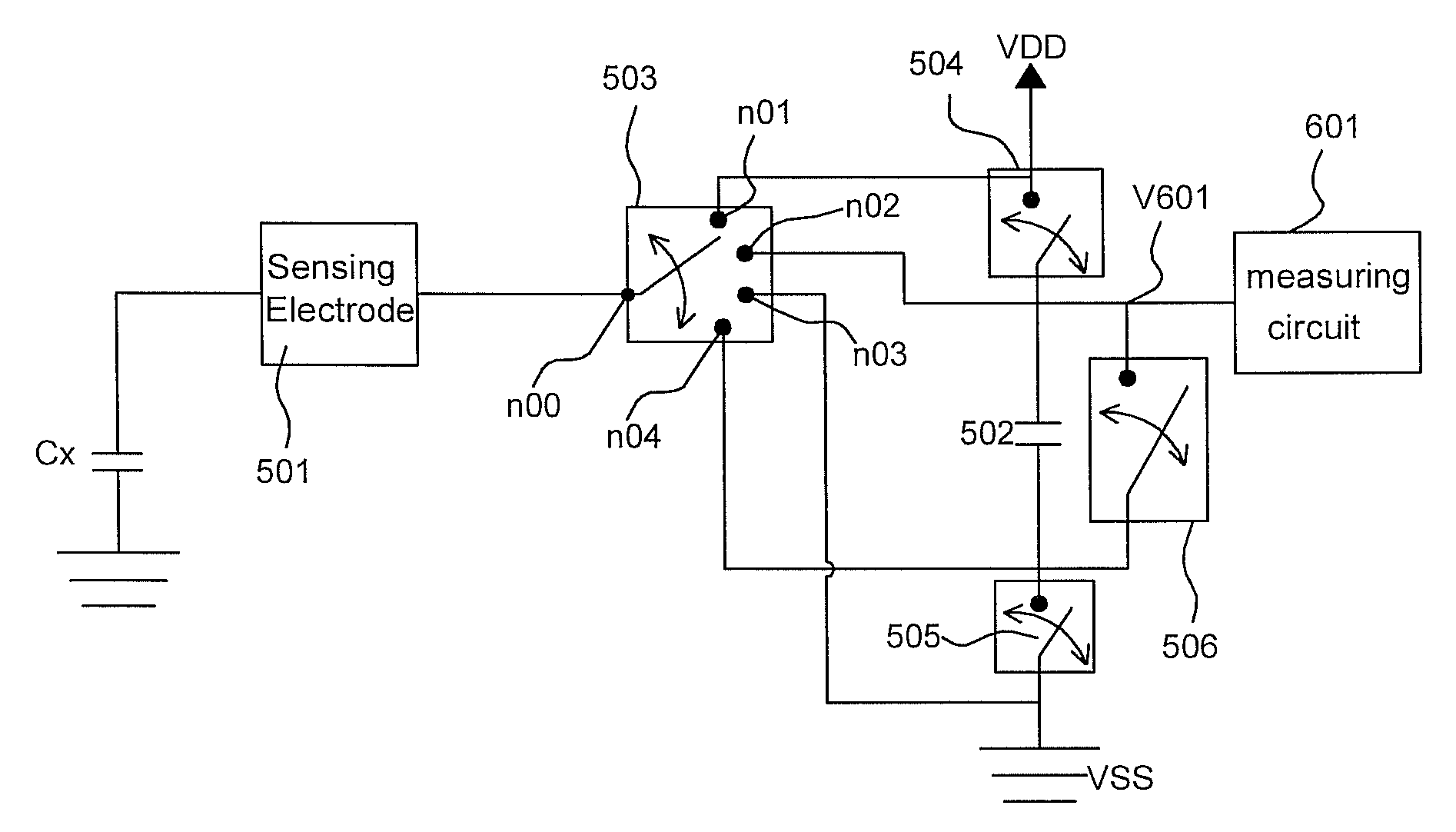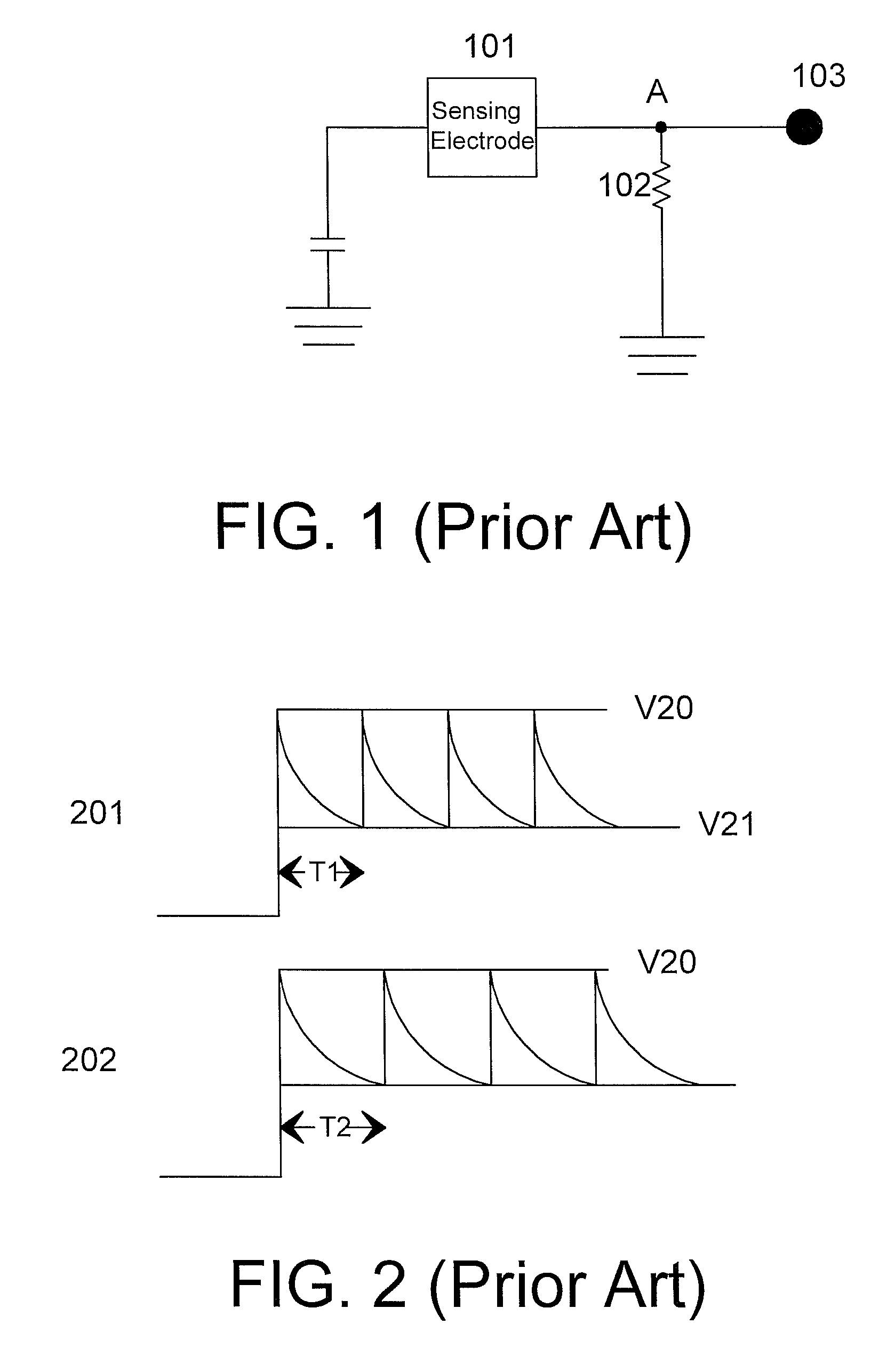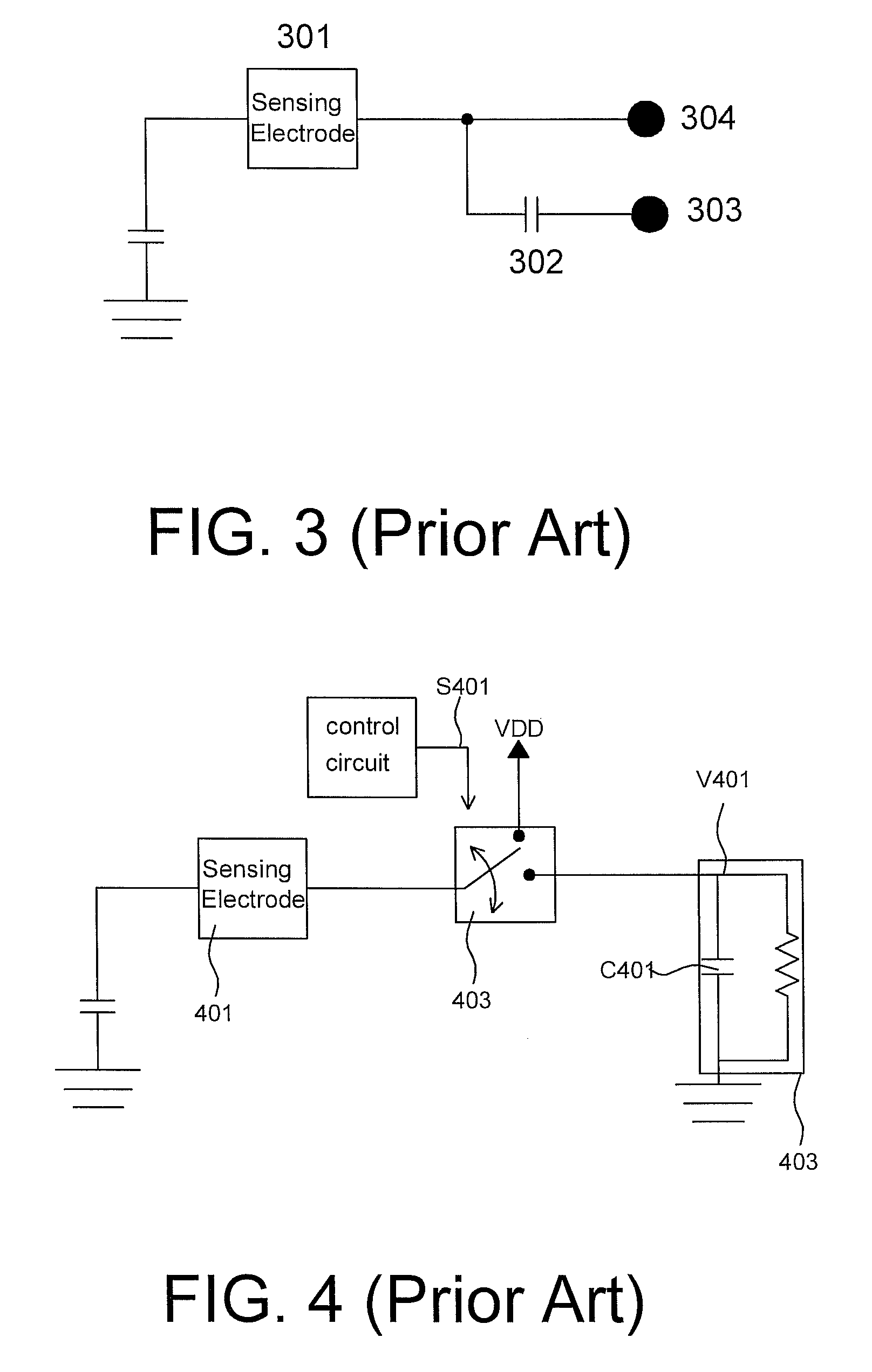Capacitive sensor
- Summary
- Abstract
- Description
- Claims
- Application Information
AI Technical Summary
Benefits of technology
Problems solved by technology
Method used
Image
Examples
Embodiment Construction
[0038]The present invention will be apparent from the following detailed description, which proceeds with reference to the accompanying drawings, wherein the same references relate to the same elements.
[0039]FIG. 5 is a circuit diagram showing a capacitive sensor according to an embodiment of the invention. Referring to FIG. 5, the capacitive sensor includes a sensing electrode 501, a sensing capacitor 502, a first switch element 503, a second switch element 504, a third switch element 505 and a fourth switch element 506. In order to describe the operation of this embodiment, nodes n00, n01, n02, n03 and n04, and common voltages VDD and VSS are labeled in FIG. 5. In order to make one of ordinary skill in the art understand the spirit of this invention, it is assumed that the common voltage VDD is a power voltage, and the common voltage VSS is a ground voltage in this embodiment. The circuit connection relationship of this capacitive sensor is illustrated in the drawing.
[0040]Regardi...
PUM
 Login to View More
Login to View More Abstract
Description
Claims
Application Information
 Login to View More
Login to View More - R&D
- Intellectual Property
- Life Sciences
- Materials
- Tech Scout
- Unparalleled Data Quality
- Higher Quality Content
- 60% Fewer Hallucinations
Browse by: Latest US Patents, China's latest patents, Technical Efficacy Thesaurus, Application Domain, Technology Topic, Popular Technical Reports.
© 2025 PatSnap. All rights reserved.Legal|Privacy policy|Modern Slavery Act Transparency Statement|Sitemap|About US| Contact US: help@patsnap.com



